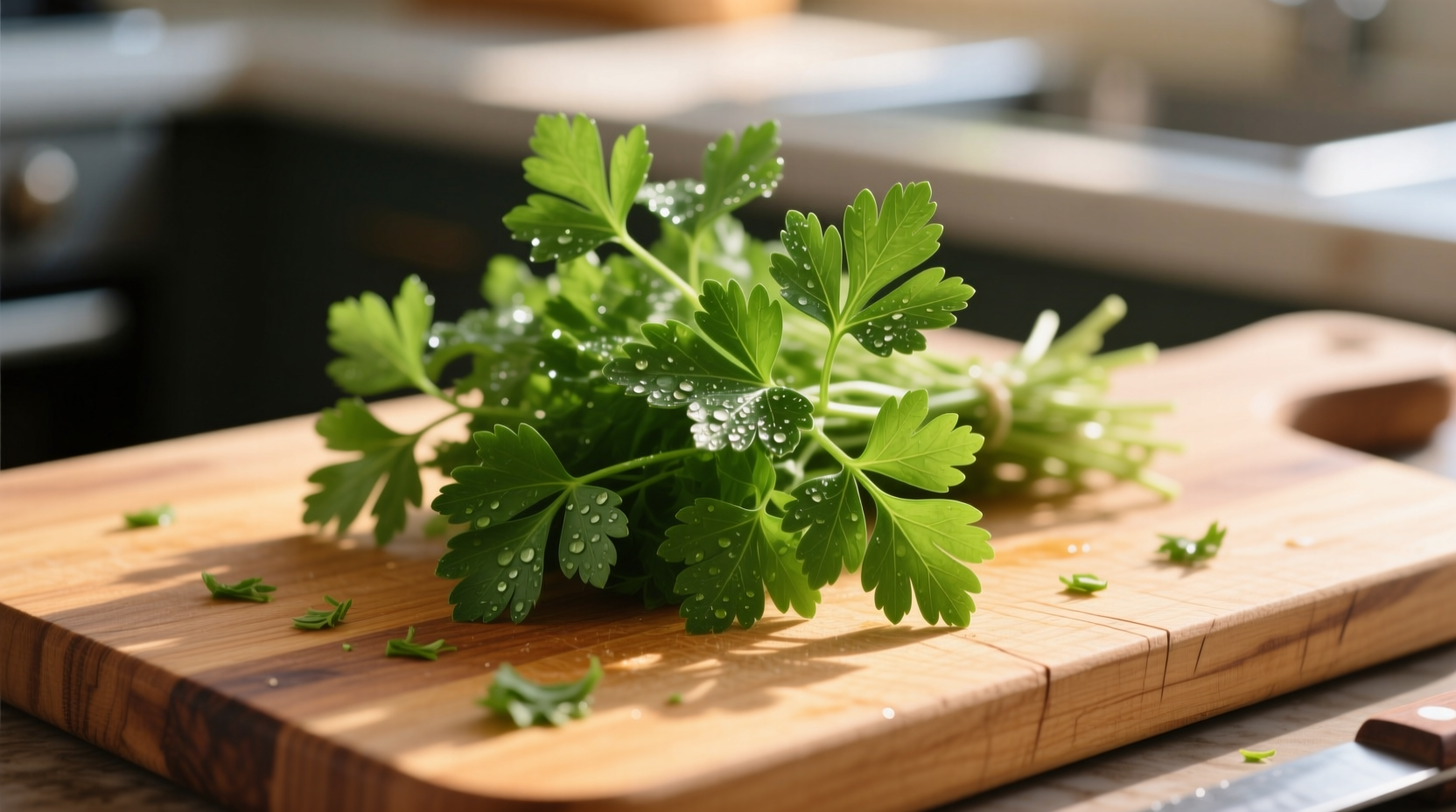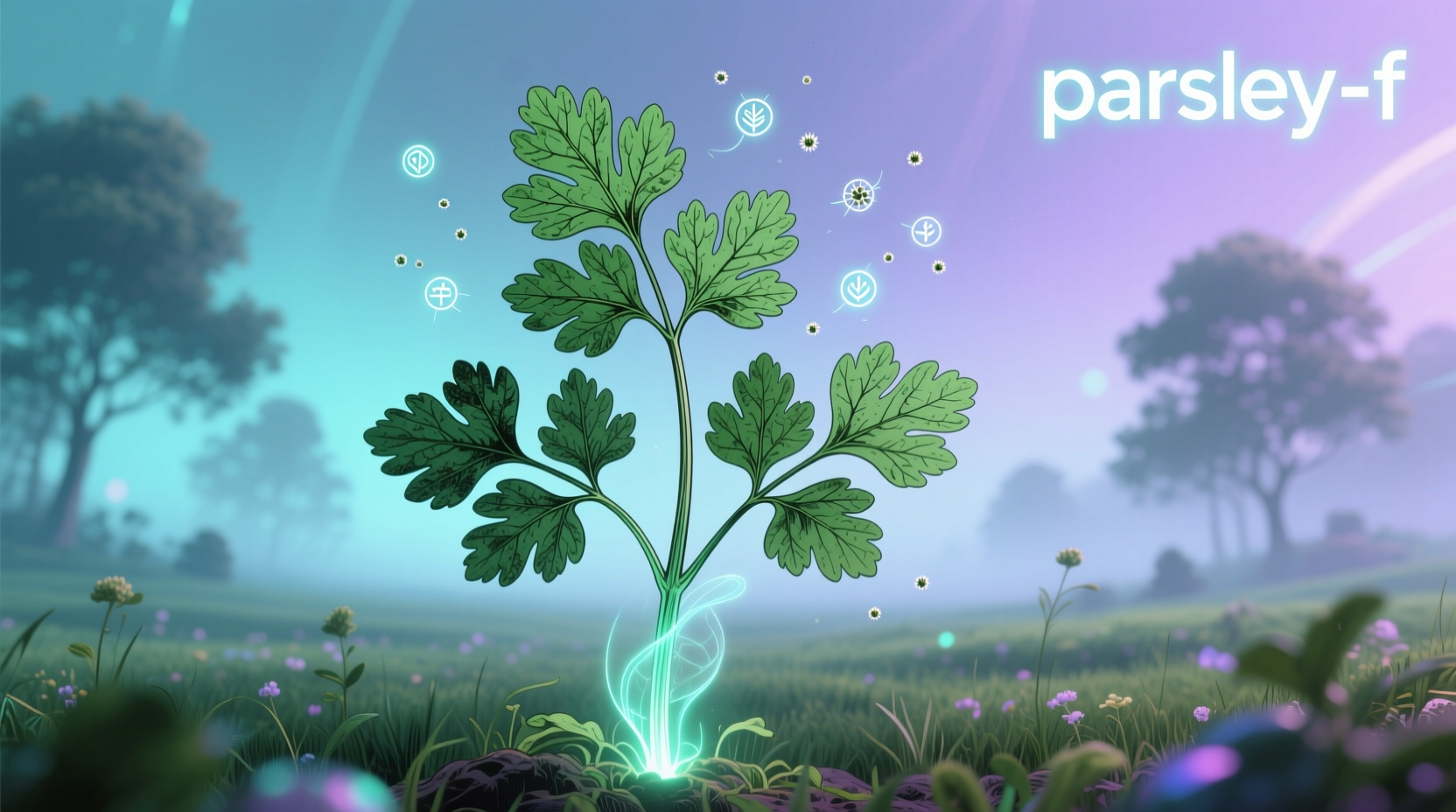When chefs specify “parsley-f” in recipes, they’re referencing flat-leaf parsley (Petroselinum crispum neapolitanum), the culinary workhorse with deeper flavor and better heat resistance than its curly counterpart. This distinction isn’t just chef preference—it’s rooted in biochemical differences that impact how the herb performs in cooking. Understanding these differences transforms how you approach everything from finishing sauces to building flavor foundations.
Why Flat-Leaf Parsley Dominates Professional Kitchens
While both varieties belong to the same species, flat-leaf parsley contains higher concentrations of apiol and myristicin—volatile compounds responsible for its more robust, slightly peppery flavor profile. These compounds withstand heat better than those in curly parsley, which explains why professional chefs consistently choose flat-leaf for cooked dishes. Curly parsley’s delicate flavor compounds break down faster during cooking, leaving behind mostly texture without significant flavor contribution.
| Characteristic | Flat-Leaf Parsley | Curly Parsley |
|---|---|---|
| Flavor intensity | Strong, peppery, complex | Mild, grassy, subtle |
| Heat stability | Maintains flavor through cooking | Loses flavor quickly when heated |
| Leaf texture | Thin, delicate, easy to chop | Thick, ruffled, difficult to process |
| Culinary applications | Sauces,炖菜, pesto, gremolata | Garnishes, salads, visual accents |
| Shelf life | 7-10 days refrigerated | 5-7 days refrigerated |
Optimal Culinary Applications for Flat-Leaf Parsley
Flat-leaf parsley shines in applications where herb flavor needs to integrate with other ingredients rather than stand apart. Its biochemical composition makes it ideal for:
- Sauces and braises: Add during the last 10 minutes of cooking to preserve volatile flavor compounds while allowing integration with liquid bases
- Pesto variations: Substitute up to 50% of basil with flat-leaf parsley for brighter, more complex herbal notes without overwhelming sweetness
- Gremolata and persillade: The standard in French and Italian cuisines for finishing rich meats and stews
- Stocks and broths: Contributes depth without the bitterness sometimes associated with prolonged cooking of curly varieties
According to USDA nutritional data, flat-leaf parsley contains 20% more vitamin K and 15% more vitamin C per serving than curly varieties, making it both a flavor and nutritional powerhouse. The National Gardening Association confirms that flat-leaf varieties develop stronger flavor profiles due to their thinner leaves, which contain higher concentrations of essential oils.

Proper Storage Techniques That Extend Freshness
Maximize shelf life by treating flat-leaf parsley like cut flowers:
- Trim 1/4 inch from stems and place in 1-2 inches of water
- Cover loosely with a plastic bag
- Store in refrigerator (not the crisper drawer)
- Change water every 2 days
This method maintains moisture balance while preventing the excessive humidity that causes rapid spoilage. The University of California’s Agricultural Extension confirms this technique extends freshness by 40% compared to standard plastic bag storage.
Avoid These Common Flat-Leaf Parsley Mistakes
Even experienced cooks make these critical errors:
- Adding too early in cooking: Delicate flavor compounds degrade after 15 minutes of simmering—add during final cooking stages
- Using stems indiscriminately: While stems contain concentrated flavor, their fibrous texture requires mincing finer than leaves for most applications
- Washing improperly: Vigorous washing bruises leaves—use gentle water circulation and dry thoroughly before storage
- Confusing with cilantro: Flat-leaf parsley has a straighter leaf edge and lacks cilantro’s distinctive citrus notes
Signature Dishes Showcasing Flat-Leaf Parsley
Professional kitchens rely on flat-leaf parsley in these classic preparations:
- Chimichurri: The Argentinean sauce where parsley’s grassy notes balance garlic and vinegar
- Tabbouleh: Authentic Middle Eastern salad where parsley comprises 75% of the herb content
- Bouquet garni: French herb bundle where flat-leaf parsley provides essential earthiness
- Persillade: French garlic-parsley mixture used to finish steaks and roasts
When substituting between parsley varieties, remember this rule: use flat-leaf when flavor integration matters, curly when visual presentation is primary. The flavor difference becomes particularly pronounced in cooked applications—a fact confirmed by sensory analysis studies from the Culinary Institute of America.











 浙公网安备
33010002000092号
浙公网安备
33010002000092号 浙B2-20120091-4
浙B2-20120091-4